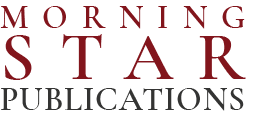In today’s digital landscape, businesses and nonprofits face increasing threats from misinformation and disinformation. While these terms are often confused, they are distinct. Misinformation refers to false information spread unintentionally, while disinformation involves deliberately false information aimed at deceiving others. Both can significantly damage an organization’s reputation, disrupt growth and strain relationships with stakeholders.
For small organizations, limited resources can make it harder to combat these issues, but proactive reputation management is essential. Here are key strategies to help you protect your brand:
1. Educate your team and stakeholders – An informed team is your first line of defense. When employees and stakeholders understand the risks posed by misinformation, they’re better equipped to identify and address it.
Hold regular training sessions on spotting credible sources, verifying facts and reporting potential disinformation. Educating your internal and external audiences fosters trust and makes it more difficult for false information to spread. An informed network helps safeguard your organization’s credibility.
2. Build and monitor your online presence – Your online presence reflects your authority and credibility. Keeping your website, social media channels and profiles on platforms like Google My Business and LinkedIn current ensures that your brand is always represented accurately.
Consistency is key. Support any claims you make with data, reports, or testimonials from credible sources. Regularly monitor what people are saying about your brand using tools like Google Alerts, Mention or Hootsuite. This enables you to identify and address any misinformation swiftly, before it gains traction.
3. Create and maintain a Wikipedia page – A Wikipedia page can serve as a powerful asset in combating misinformation. Wikipedia is one of the most trusted information sources online, often appearing at the top of search results. Keeping your organization’s Wikipedia page current and accurate establishes an authoritative source of truth, which can counteract false narratives circulating elsewhere.
To manage your Wikipedia page effectively:
• Cite credible sources, including media articles, industry reports and academic publications.
• Update the page regularly to reflect the latest information, such as changes in leadership, new services or notable achievements.
• Monitor edits to ensure that errors or biases are corrected quickly.
A transparent and well-maintained Wikipedia page not only enhances your reputation but also provides a neutral, verified resource for anyone seeking facts about your organization.
4. Develop a crisis communication plan – No organization is immune to the potential harm of misinformation or disinformation, which is why preparation is key. A comprehensive crisis communication plan will enable your organization to respond promptly and effectively if a reputational threat arises.
Your plan should include:
• Designated spokespersons trained to handle media inquiries calmly and professionally.
• A fact-checking process to ensure that any public statement is based on accurate, verified information.
• Guidelines for responding to harmful content quickly and appropriately.
• Pre-written response templates that can be tailored to specific situations, allowing for a swift and organized response.
By having a plan in place, you can take control of the narrative before it spirals into a prolonged crisis.
5. Respond transparently and authentically – If misinformation or disinformation targets your organization, respond with transparency and authenticity. Avoid aggressive or defensive language, which can escalate tensions and further damage your reputation. Instead, focus on calmly correcting the misinformation with clear, verifiable facts.
If your organization made an error, acknowledge it honestly. Taking accountability fosters trust and demonstrates that your organization values truth and integrity. An open, honest response shows that your organization is committed to transparency.
Bottom line: Be proactive, not reactive
The best defense against misinformation is a strong offense. Regularly share positive updates, stories and news about your organization to build a buffer of trust with your audience. Proactively managing your narrative through blog posts, press releases and social media updates establishes your organization as a credible and authoritative source of information.
When misinformation surfaces, the strong foundation of trust you’ve built can help shield your organization from harm. A proactive communication strategy shows your audience that you are open, transparent and constantly working to keep them informed.
Hook PR & Marketing helps organizations grow through personalized marketing strategies. Learn more about how we can help you manage your reputation at hookpr.com.

